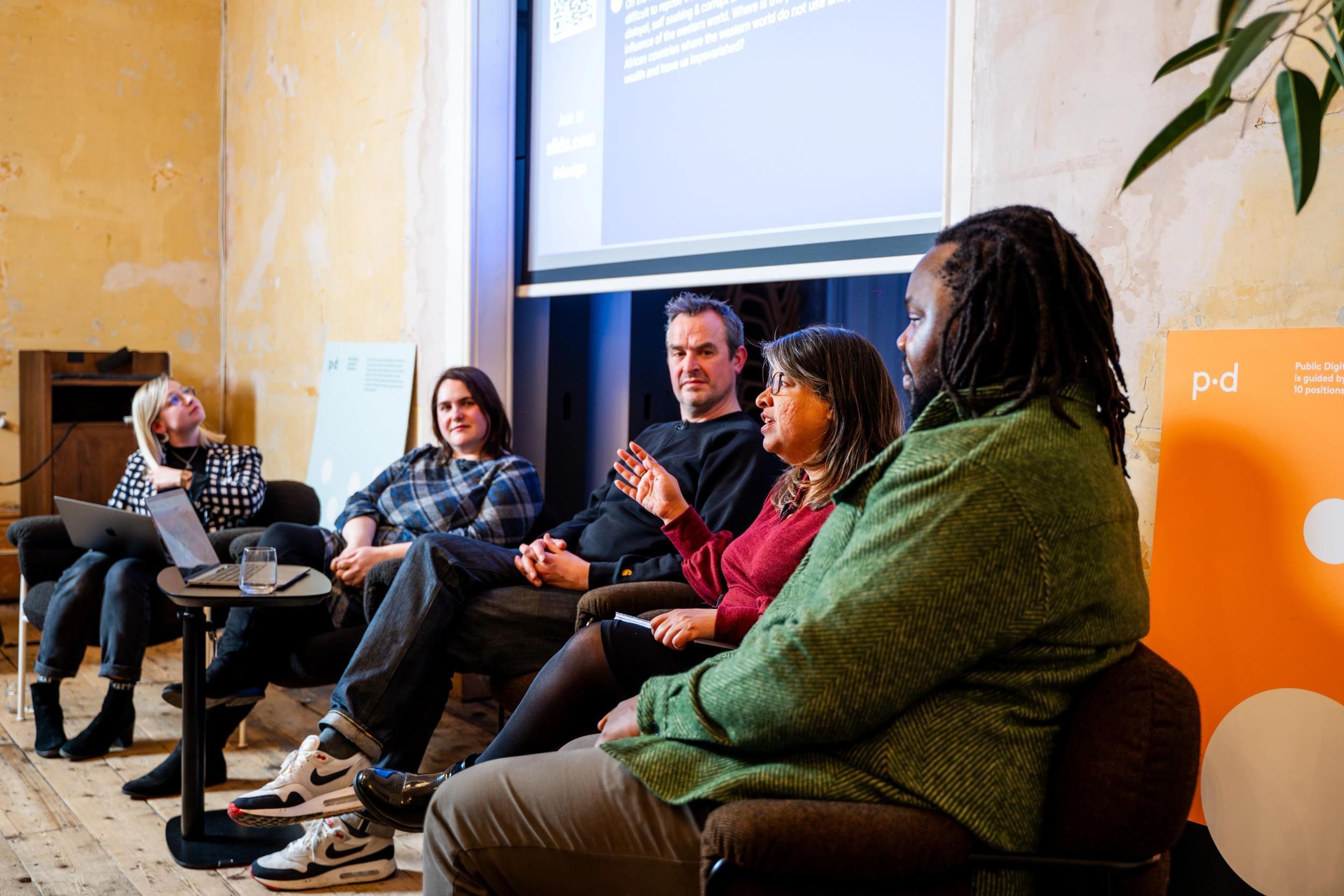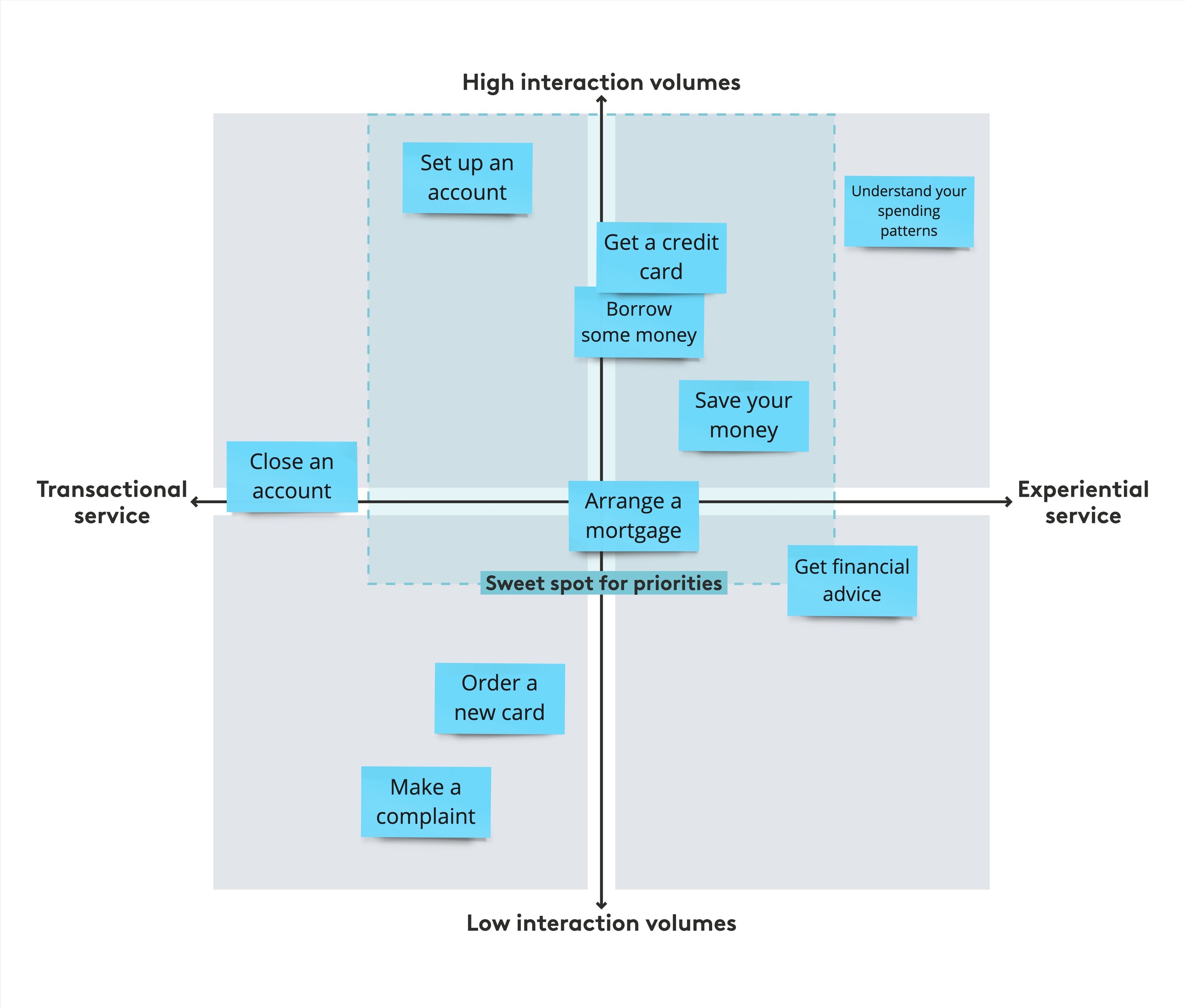
Adopting a prototype mindset
Prototyping as a practice is generally considered the domain of designers.
It's used to build early versions of a design to help inform what decisions to make next. This could be to tweak and continue, to radically change direction, or to stop altogether. Doing this as early as possible means we’re less likely to create bad products that don’t meet user needs.
Digital products might have click-through prototypes built in Figma, code or even PowerPoint. Physical product prototypes could start as anything from card and tape, through to 3D printed metal.
The role of a prototype is first and foremost to learn something about how the design will or won’t work. This allows you to make informed decisions about what direction an idea should take before investing more time and money in it.
Prototyping sits on a spectrum, between a sketch, or map of a thing, and early pilots for a ‘test and learn approach’. Early sketches are helpful to capture thoughts, but prototypes should enable a fuller experience, without necessarily needing to go through the governance of a pilot.

Prototyping as a mindset
Prototyping as a tool isn’t limited to design. In fact, anyone can use this approach - and that includes leaders too.
Designers often instinctively use prototypes to learn with their peers or teams as they explore ideas, you can read more about it from research with automotive design teams. If you’ve not had experience prototyping in your own work the leap to starting working this way can be harder to make, but the principles of early exploration with your teams are still relevant.
The process of prototyping something forces you to move from thoughts and words into actions and creation. This makes it especially powerful in communicating between people who are exploring ambiguous concepts in order to build shared understanding.
Much of the work done to enable digital transformation in an organisation isn’t directly building products, it involves changing incentives, shaping truthful narratives, or taking new approaches to procurement.
Adopting a prototype mindset in your work as a leader can help you make less risky decisions faster, even if you don't consider that work to be ‘design’. Not all of us are designing chairs, or digital products, but many of us will be trying to bring a group of people together to align around a shared vision of what the future could be.
Embracing a prototyping mindset can help you do that by helping others experience this shared vision more tangibly.
Prototyping intangible things
Given that things like services, policies, strategies or even meetings are less tangible than products, it can be difficult to know where to start with prototyping them.
The first question to ask is “what are we trying to learn?” Prototypes are about learning: Your priority should be concentrating on the thing that you especially need to learn and using the least amount of time and effort to learn it.
This is a fundamental change from traditional ways of working, where there can be an expectation that we first figure everything out, and then we act.
Once you have decided on your learning objectives, you can then “build the prototype” and decide how to get people to interact with it.
There’s a nice example of this in the film ‘The Founder’ about the origin story of McDonalds. In one scene we see the founders explore the interaction between physical space, processes and people using a tennis court to ‘prototype’ a new way of operating a fast food kitchen.
Their approach to doing this demonstrates their rapid speed of learning, in a way that wouldn’t have been possible by writing something down, or simply having a conversation.
How polished should prototypes be? Balancing fidelity and risk
It's easy to fall into the trap of wanting to make something polished that looks impressive to other people. When your own preferences, or the input of others, suggests that you should wait until something is more refined, remember that:
Different levels of fidelity will probably teach you different things. When you create something that is very rough and show it to others, you communicate that it's in development and it's still valuable for them to give feedback that will change it.
The earlier you can demonstrate something isn’t worth doing, the lower the risk and the less the cost. Perhaps most importantly, as a leader this sets a precedent for ideas to be stopped, or paused. This is a vital part of organisations making better decisions.
The best way to start realising the value of prototyping in your work is to start trying it. You’ll be surprised how quickly you can learn something new by exploring a problem or an idea in a new way.
Written by

Alistair Ruff
Director

